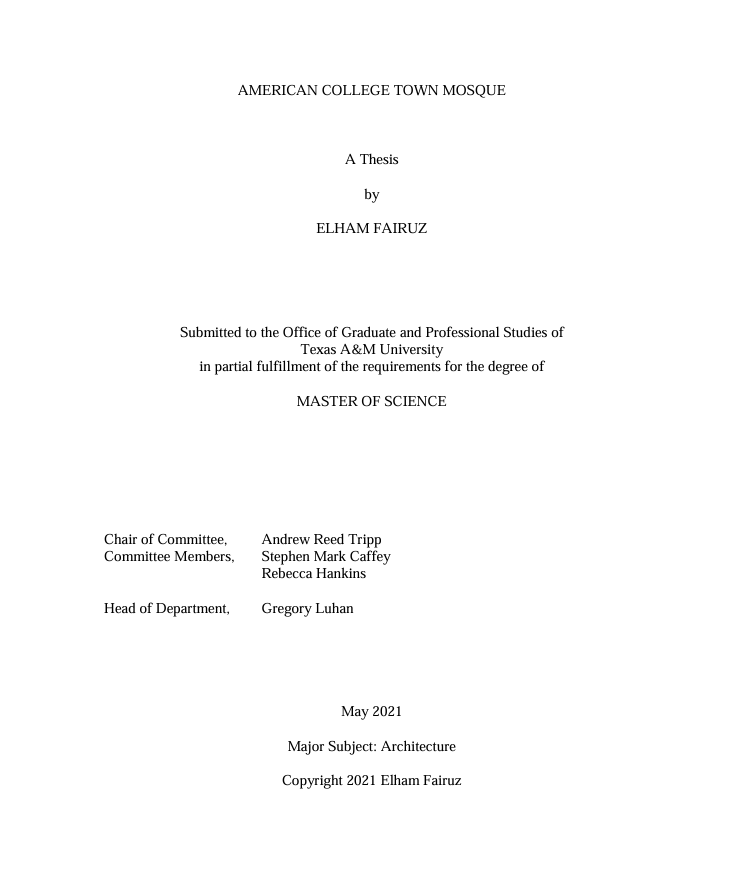
The mosque as a social and communal space has transformed through time, and over geographical regions. But it is also people’s practices, specially their social practices, in keeping with their own times and contexts that have shifted and nudged the ways in which mosque as an architectural edifice has been observed. This thesis is an attempt to understand the underlying phenomenon that affect a small college town community in the United States, and how architecture can, through use of anthropology and ethnography, take a deeper dive into understanding community needs and thus inform design practices. The thesis hopes to raise questions of representation, the problems thereof, the idea of participation and concludes by asking if and how participation can translate into better architectural representation and practice.
Fairuz, E., ‘American College Town Mosque’ (Unpublished Master Thesis, Texas A&M University, 2020).
I agree to the terms outlined below:
You agree to upload and assign Mosqpedia Database the rights to use the content worldwide and in perpetuity across all current and future media platforms. Mosqpedia Database may edit, copy, adapt and translate your contribution.
The content will be distributed under the Creative Commons Attribution-Deed – Attribution-NonCommercial-NoDerivatives 4.0 International – Creative Commons
All data will be stored in line with data protection regulations.